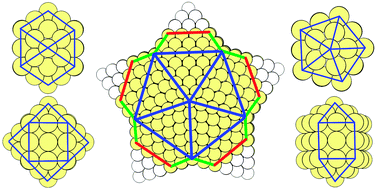Faceting preferences for AuN and PdN nanoclusters with high-symmetry motifs†
Abstract
The structural preferences of

* Corresponding authors
a
School of Chemistry, University of Birmingham, Edgbaston, Birmingham, UK
E-mail:
r.l.johnston@bham.ac.uk
Fax: +44 (0)121 414 4403
Tel: +44 (0)121 414 7477
b Kathleen Lonsdale Materials Chemistry, Department of Chemistry, University College London, 20 Gordon Street, London, UK
c Nanoscale Physics Research Laboratory, School of Physics and Astronomy, University of Birmingham, Birmingham, UK
The structural preferences of

 Please wait while we load your content...
Something went wrong. Try again?
Please wait while we load your content...
Something went wrong. Try again?
A. J. Logsdail, Z. Y. Li and R. L. Johnston, Phys. Chem. Chem. Phys., 2013, 15, 8392 DOI: 10.1039/C3CP50978H
To request permission to reproduce material from this article, please go to the Copyright Clearance Center request page.
If you are an author contributing to an RSC publication, you do not need to request permission provided correct acknowledgement is given.
If you are the author of this article, you do not need to request permission to reproduce figures and diagrams provided correct acknowledgement is given. If you want to reproduce the whole article in a third-party publication (excluding your thesis/dissertation for which permission is not required) please go to the Copyright Clearance Center request page.
Read more about how to correctly acknowledge RSC content.
 Fetching data from CrossRef.
Fetching data from CrossRef.
This may take some time to load.
Loading related content
